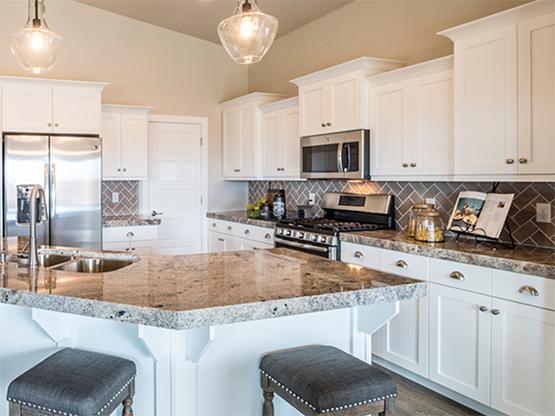In Love With Two Houses?
What to consider when making the final decision
By Michele Dawson
- The neighborhoods. If the two final contenders are in different neighborhoods, evaluate the pros and cons. If you have kids and being close to a park is important, you’ll want to consider that. How close are shopping, restaurants, church, and other services? Are the streets maintained? Do homeowners landscape and maintain their homes nicely? How long will your commute to work be?
- The schools. If you have school-aged children, you definitely want to consider the reputation of the neighborhood schools. You can usually find general district information and state standardized test results online. But once you’re this deep in the process, you’ll want to visit the schools and receive the information first-hand from school officials. You should also talk to teachers and parents.
- Crime. Go to the local police or sheriff department and ask about crime in your specific neighborhood. You might find theft or vandalism to be more prevalent in one area than another.
- The houses compared to others in the neighborhood. While it may boost your self-esteem to have the biggest house on the block, it’s typically a better idea to stay away from purchasing the neighborhood monster. When it comes time to sell you’ll find that the lower value of your neighbors’ homes will shrink your home’s value.
- Appreciation. If the two homes you’re eyeing are in different parts of town or different neighborhoods, ask your real estate agent to retrieve sales of homes in those neighborhoods over the past few years. If one neighborhood shows an annual average 8 percent increase and another is skyrocketing at 15 percent, you may have your decision made.
- The sellers’ situations. If you don’t know already, ask your real estate agent how long each home has been on the market. Usually the longer a house has been listed, the better chance the seller will accept an offer lower than asking price. Conversely, if the house has been on the market for just a couple days, the sellers will probably wait for a better offer if you offer less than the listed price. Your real estate agent might also be able to dig up additional information about the sellers, like why they’re selling. If it’s a job-related move or a divorce, the sellers likely want to move as quickly as possible, meaning you have a better shot at them accepting a lower price.
- The houses themselves. If you haven’t already, you should make a list of the amenities and attributes you want your house to have. If you want that first-floor home office, a large, open back yard for the kids, or a gourmet kitchen, be sure to include that on your list. Then, rate how each house measures up to each need on your list.
- Drawbacks. Likewise, make a list of the cons associated with each house and determine how much of a negative impact each will have.








